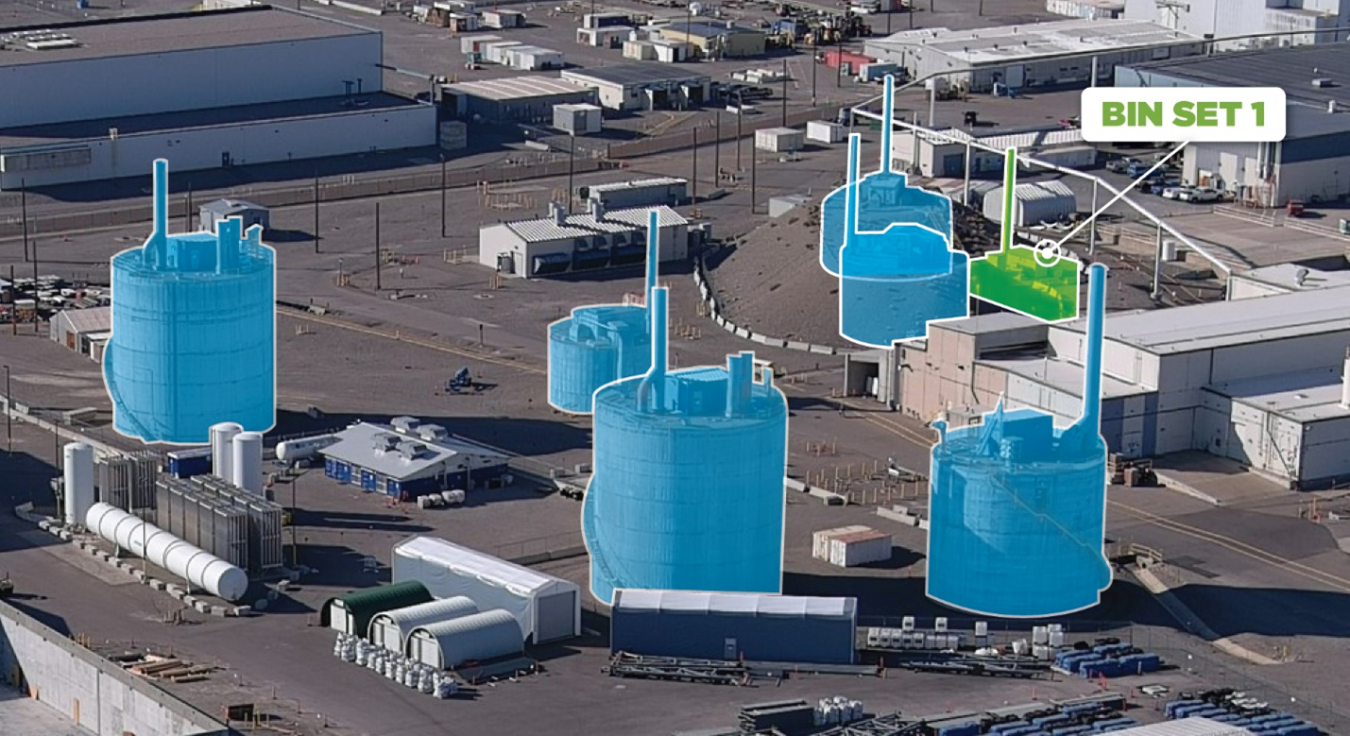A robot central to innovative methods Idaho Cleanup Project crews are developing to retrieve calcine, a granular solid waste, has successfully demonstrated its proficiency.
Office of Environmental Management
February 18, 2025Idaho Cleanup Project crews with the Calcine Disposition Project watch as robotics equipment is tested remotely inside a full-scale replica of a calcine bin set. The technology will aid the U.S. Department of Energy Office of Environmental Management mission to retrieve 4,400 cubic meters of calcine waste stored at the Idaho National Laboratory Site.
IDAHO FALLS, Idaho — A robot central to innovative methods Idaho Cleanup Project crews are developing to retrieve calcine, a granular solid waste, has successfully demonstrated its proficiency.
The team recently launched a new technology and equipment test at the Idaho National Laboratory (INL) Site to prove the capability of remote-handled robotics to properly weld access points in the Calcined Solids Storage Facilities, where 4,400 cubic meters of calcine waste is stored. The robot passed the test.
All calcine waste must be removed from the state for permanent disposal under an agreement with the State of Idaho. The U.S. Department of Energy (DOE) had converted liquid, high-level radioactive waste into calcine, which is similar in consistency to sand, until those operations ended in 2000. The waste was created during historic spent nuclear fuel reprocessing runs at the Idaho Nuclear Technology and Engineering Center.
Workers transferred the calcine to large, stainless steel bins encased in six concrete vaults called bin sets. Due to the design of one of the six bin sets, called bin set 1, crews must install a nearly 20-foot long, 8-inch diameter pipe, or access riser, to retrieve the granular waste.
Mechanical Engineer Jeremiah Voss explained the importance of the robotics equipment to the overarching mission of the Calcine Disposition Project and DOE Office of Environmental Management (EM) contractor Idaho Environmental Coalition.
“Our mission is to retrieve calcine, a challenging feat because the oldest bin sets were not designed to allow for material removal,” said Voss. “What we accomplish through these tests is essential to demonstrating that EM can achieve that mission."
Calcine, a granular solid waste converted from a high-level radioactive liquid waste, is stored in stainless steel bins encased in six concrete vaults called bin sets. The bin sets, shown here in blue and green, are located at the Idaho National Laboratory Site’s Idaho Nuclear Technology and Engineering Center.
During the test, conducted at a full-scale replica of bin set 1, engineers and operators used the robot, operated remotely from a centralized control, to connect an access riser pipe segment to a steel plate and then cut the steel plate.
In practice, the robot is designed to travel down the 20-foot pipe and weld it to the bins. Once the weld is complete, the same robot is fitted with equipment to cut a hole into the bins at the welded point of the pipe.
A robot was designed to weld an access riser pipe, pictured, to stainless steel bins in a bin set at the Calcined Solids Storage Facilities. The robot completed a successful weld and cut during testing.
Voss was encouraged by the results of the test, which included several successful welds and cuts by the robot.
“We gained a lot of valuable information from the test and saw that the technology functioned the way we had hoped it would,” said Voss. “Going forward, we know what steps we need to take to improve the robot design and to better prepare for actual retrieval of calcine at the bin sets.”
The project team will perform more extensive integrated tests to closely imitate the process to be performed at the bin sets.
-Contributor: Carter Harrison
To receive the latest news and updates about the Office of Environmental Management, submit your e-mail address.


